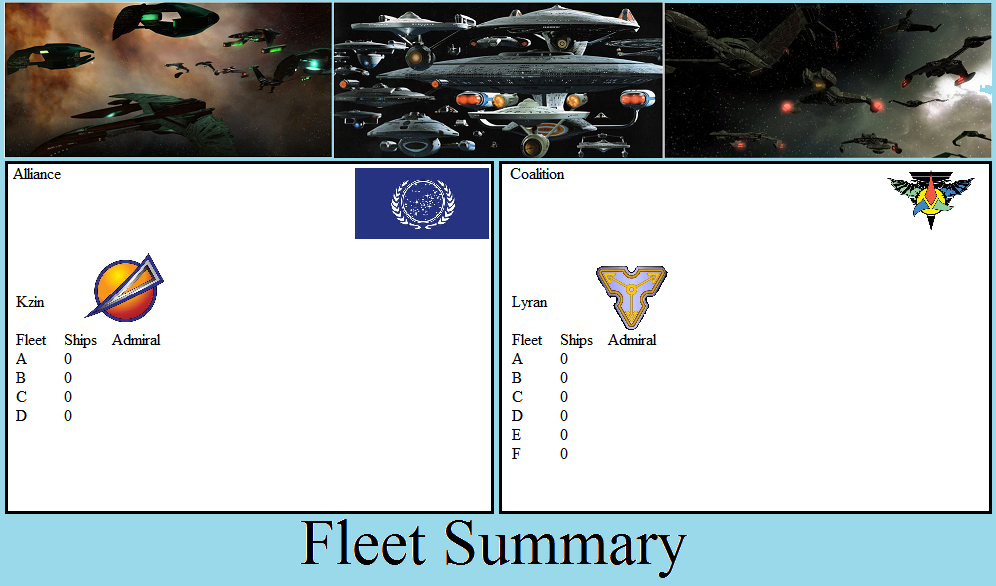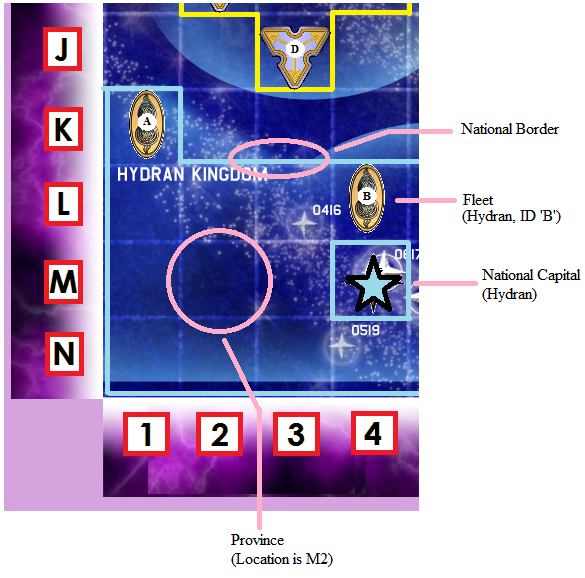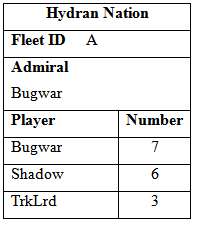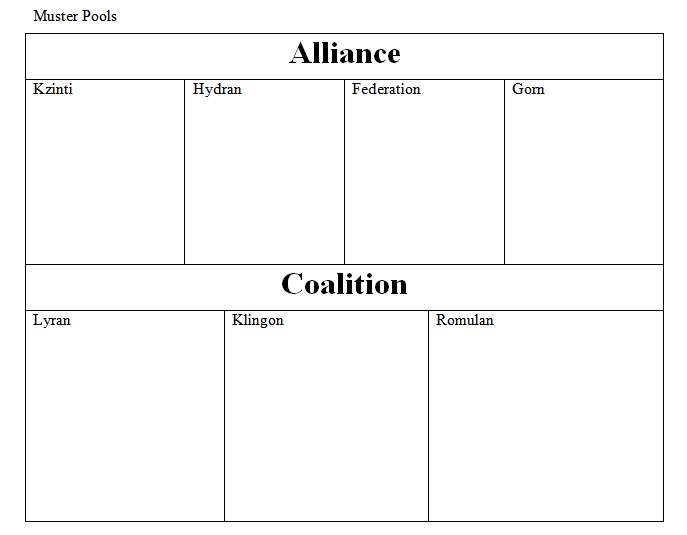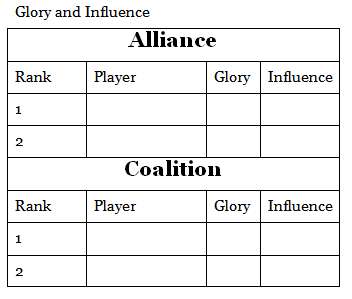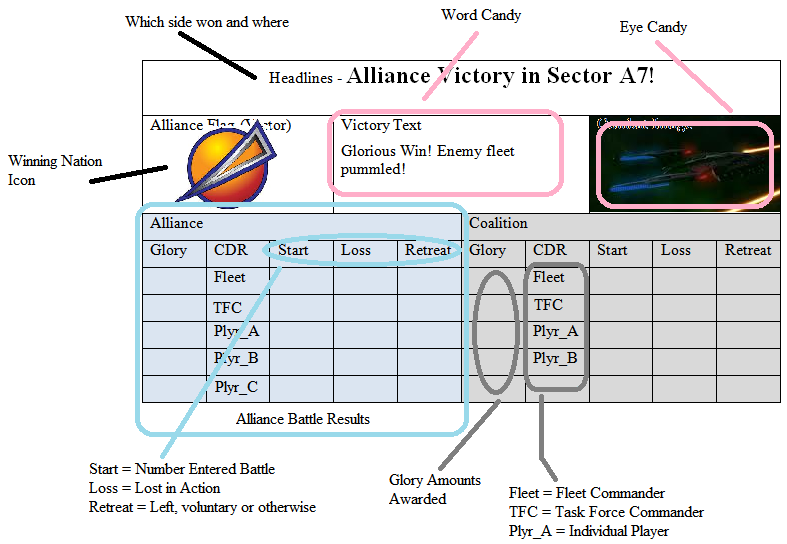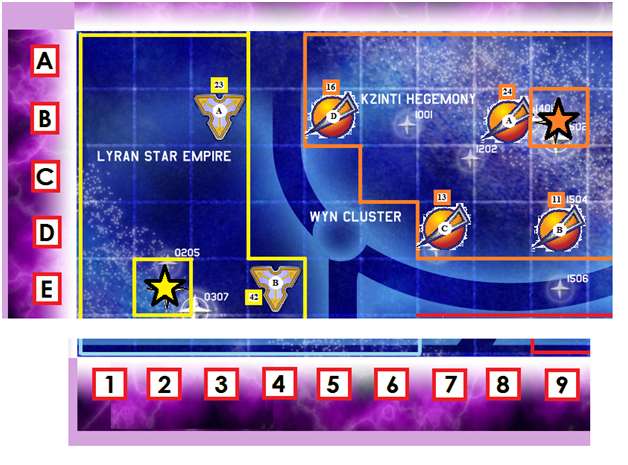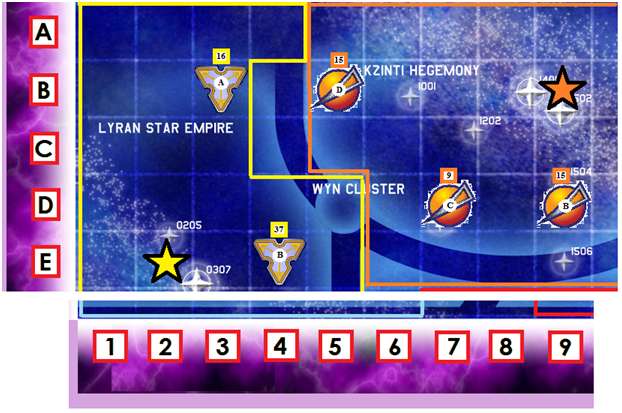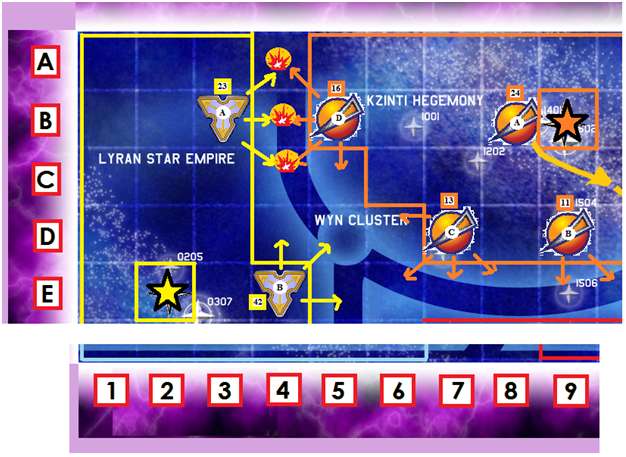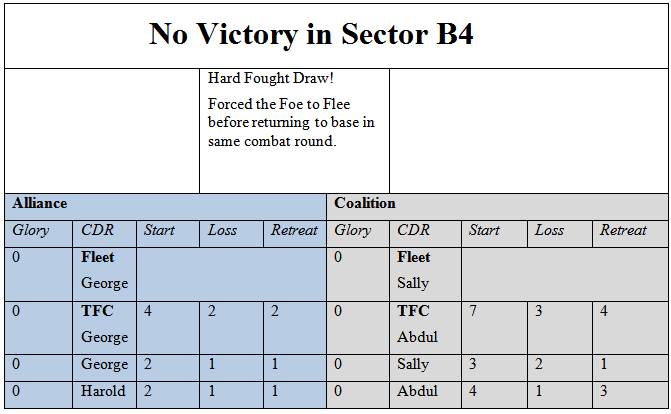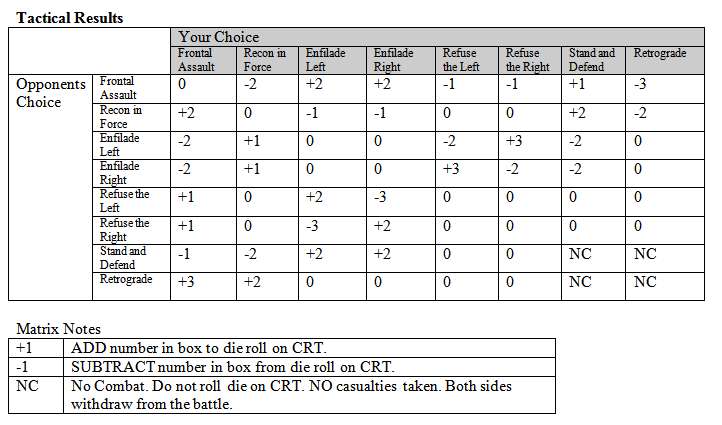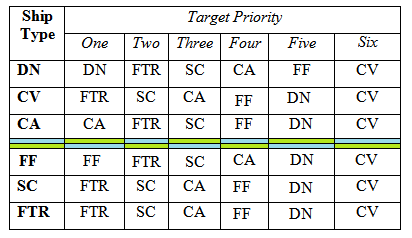bugwar
Emperor
- Joined
- Sep 15, 2012
- Messages
- 1,246
FedEmpLite
Welcome players, to the 24th century and the Star Trek universe!
May you live long and prosper, and your shirts never be red.
May you live long and prosper, and your shirts never be red.
Overview
This is a relatively simple (from the players view, anyway) rule set inspired by the board game Federation and Empire (F&E).
A further inspiration for this are Jeff Watts rules posted in the BoardGameGeek forum for F&E.
This variant targets forum gamers and supports rapid turns, a simple player interface, and the capability of cycling players in and out over the course of the game.
The Story So Far...
Despite the best efforts of mundane rulers, politics evolve over the course of Alpha Quadrant history.
Empires rise and fall, and the Illuminati continue behind the scenes.
Working subtly over the millennia to guide the fate of worlds and their sapients, these functionally immortal puppet masters manipulate events covertly to influence the progress of the galaxy towards their individual goals.
While interstellar governments pretend they run the show, the Shadow Lords compete with each other in their unending game* to mold the universe to their own ends.
*It can be considered a game, From a certain point of view..., as one misguided ancient wit put it.
Wha...?
OK, my part in this little drama is?
In FedEmpLite, each player assumes the role of a puppeteer, guiding one of the two major galactic factions (either the Coalition or the Alliance) in their struggle for dominance over the other.
As such, each player controls a portion of that factions military, spread over the component nations of the group.
While ostensibly working towards a common victory with the other players on their side, each is also competing with their fellow Illuminati in accumulating Glory for their minions.
For the player on the winning side having the most Glory is both the game victor and primed to become the driving force behind the future of the Alpha Quadrant.
Game Highlights
1. Rapid game progress. Each turn is on a 48-hour cycle (real) time, representing a year in the game. As such, the historical 18 year General War plays out in about five real weeks.
2. Quick Response. The GM posts the results of each turn within six hours of turn end, leaving the players plenty of time to plan for the next turn.
3. Simple Player Interface, complex-supporting rule set. Players can spend little time in their turns and still have an enjoyable and effective gaming experience. Or they can delve into detailed social actions with fellow players, exhaustive analysis of play options, strategy permutations, and so forth. Players decide their level of involvement. The GM is the one doing the work behind the scenes, implementing the details of player guidance.
2. Quick Response. The GM posts the results of each turn within six hours of turn end, leaving the players plenty of time to plan for the next turn.
3. Simple Player Interface, complex-supporting rule set. Players can spend little time in their turns and still have an enjoyable and effective gaming experience. Or they can delve into detailed social actions with fellow players, exhaustive analysis of play options, strategy permutations, and so forth. Players decide their level of involvement. The GM is the one doing the work behind the scenes, implementing the details of player guidance.
Rule Highlights
1. Players control multiple ships for one of the two sides in the game.
2. The player with the most Glory on the side winning the war wins the game.
3. A side wins the war by controlling two-thirds of all provinces.
4. Players get Glory by commanding winning battles where they kill more ships than they lose.
5. Players command a battle by having more ships in a battle than any other player on their side.
6. Players win battles by being on the side with ships remaining in the province at battle end.
7. Players gain Influence each turn they are in the game. Generally, the less Glory a player has, the more Influence they receive.
8. Players use their Influence to purchase additional ships.
2. The player with the most Glory on the side winning the war wins the game.
3. A side wins the war by controlling two-thirds of all provinces.
4. Players get Glory by commanding winning battles where they kill more ships than they lose.
5. Players command a battle by having more ships in a battle than any other player on their side.
6. Players win battles by being on the side with ships remaining in the province at battle end.
7. Players gain Influence each turn they are in the game. Generally, the less Glory a player has, the more Influence they receive.
8. Players use their Influence to purchase additional ships.
Administration
1. Be nice to the other players in your communications. I will do my level best to help this game do well, and I can use your help in accomplishing that.
2. This is a beta. I have tested the rules as best I can, but as everyone who has ever played a new game knows, some things fall through the cracks or were not anticipated. So bear with me as we work through the issues.
2. This is a beta. I have tested the rules as best I can, but as everyone who has ever played a new game knows, some things fall through the cracks or were not anticipated. So bear with me as we work through the issues.
Thanks, and have fun!



